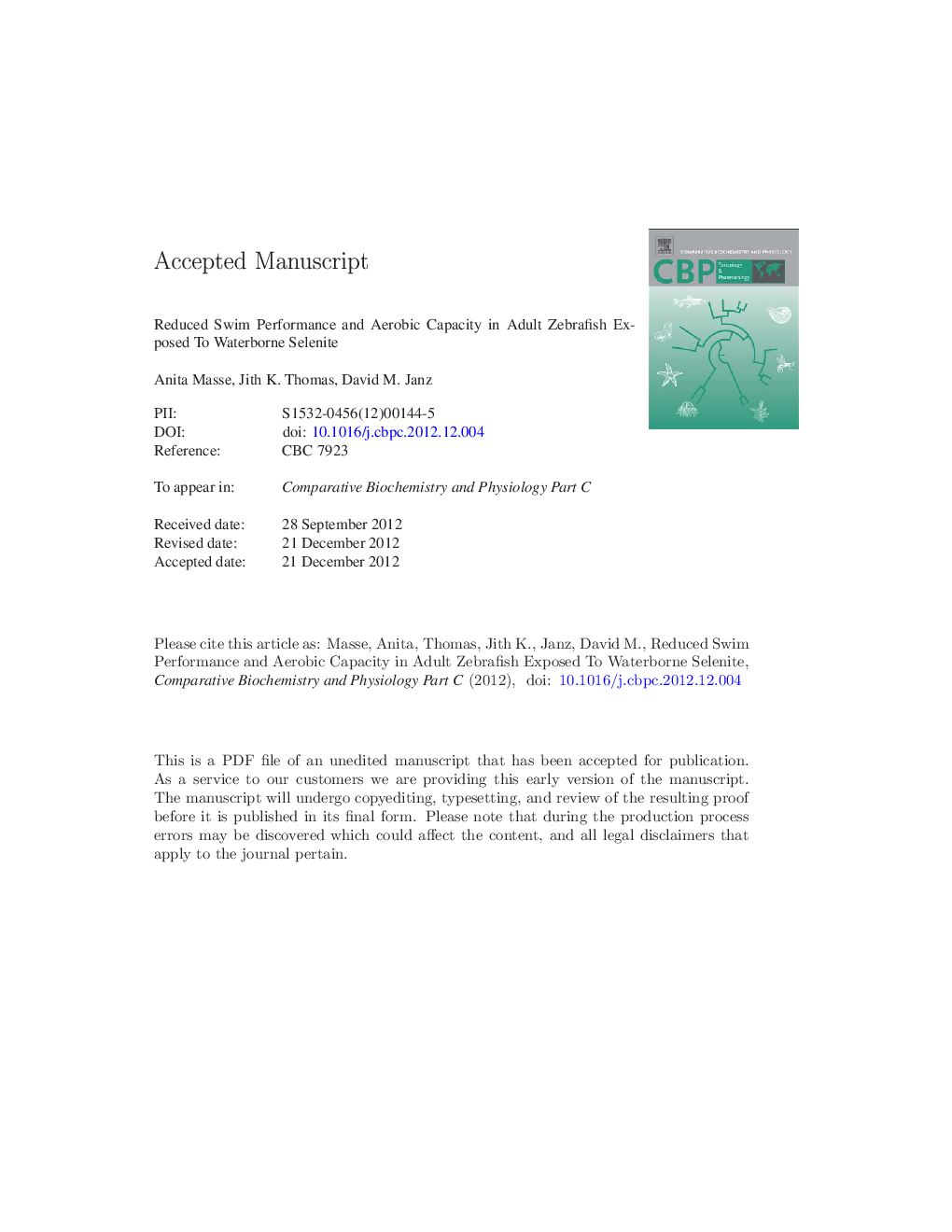| Article ID | Journal | Published Year | Pages | File Type |
|---|---|---|---|---|
| 10821713 | Comparative Biochemistry and Physiology Part C: Toxicology & Pharmacology | 2013 | 21 Pages |
Abstract
Although dietary exposure of adult fish to organoselenium in contaminated aquatic ecosystems has been reported to bioaccumulate and cause larval deformities in offspring, subtle physiological effects produced through low level waterborne selenium exposure in fish such as swim performance and aerobic capacity have not been investigated. To evaluate potential effects of selenite on these responses, adult zebrafish (Danio rerio) were exposed to nominal aqueous concentrations of 0, 10 or 100 μg/L sodium selenite for 14 days. Upon completion of the exposure period, fish underwent two successive swim trials in a swim tunnel respirometer to determine critical swim speed (Ucrit), oxygen consumption (MO2), standard and active metabolic rates, aerobic scope (AS) and cost of transport (COT) followed by analysis of whole body triglyceride and glycogen concentrations. Selenite exposure had a significant negative effect on Ucrit and aerobic capacity. Active metabolic rates and AS significantly decreased in both selenite exposure groups after the second swim trial. No significant effect was observed in MO2, standard metabolic rate, COT, triglyceride and glycogen levels, or condition factor between groups. These results suggest that aqueous selenite exposure at environmentally relevant concentrations produces adverse effects on aerobic capacity that can diminish endurance and maximum swim speeds, which may lower fish survivability.
Related Topics
Life Sciences
Biochemistry, Genetics and Molecular Biology
Biochemistry
Authors
Anita J. Massé, Jith K. Thomas, David M. Janz,
